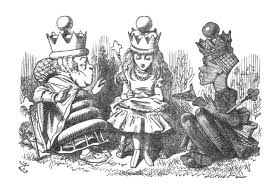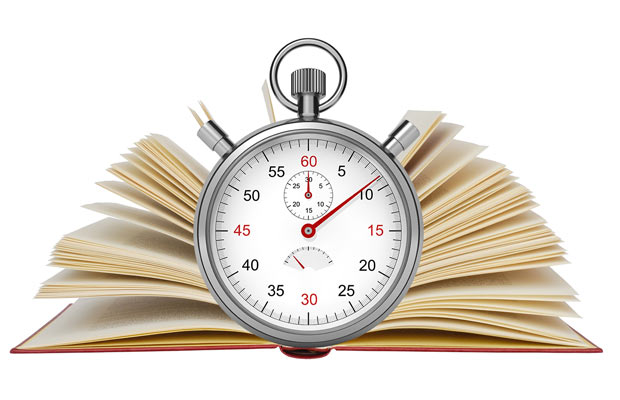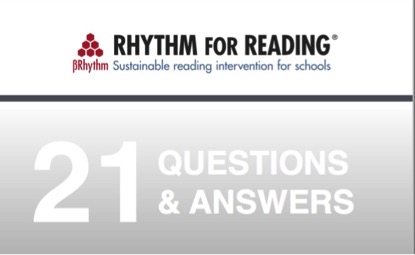The Rhythm for Reading blog
All posts tagged 'rhythm'
Catch-Up and Catch-22
14 April 2018
Academic achievement relates strongly and reciprocally to academic self-concept, for example in English and Maths (Schunk & Pajares, 2009) and also reading (Chapman & Tumner, 1995); moreover the importance of motivation increases as perceptions of reading difficulty increase (Klauda et al., 2015). So reading catch-up can also feel as if it’s a catch-22 situation. To resolve this issue, Hattie (2008) recommended that teachers teach self-regulating and self control strategies to students with a weak academic self-concept: ‘address non-supportive self-strategies before attempting to enhance achievement directly’ (Hattie, 2008; p.47).
Peeling back the layers on the self-concept literature, various models and analogies are available (Schunk, 2012). Hattie’s highly effective analogy of a rope captures rather vividly the idea of the congruence of the core self-concept as well as the multidimensionality of intertwining fibres and strands that are accumulated via everyday experiences (2008, p.46). The rope image supports the idea that a particular strand applies to maths, whereas a completely different strand applies to reading and another one for playing football and so on.
The relationship between self-concept and academic achievement is reciprocal (Hattie, 2008) and also specific to each domain (Schunk,2012). Therefore, strengthening self-concept for reading supports achievement in reading, while strengthening self-concept for maths supports maths skills. It is very difficult to strengthen low self-concept in a specific domain before addressing achievement in that area, unless introducing a completely new approach. It is important that the new approach supports self-strategies as well as directly building strength in domain-relevant skills. The Rhythm for Reading programme meets both of these requirements.
Rhythm for Reading works as a catalyst for confidence and reading skills and therefore lifts a negative reciprocal relationship (catch-22 situation) into a positive cycle of confidence and progression. This programme is effective as a reading catch-up intervention because it offers a fresh and dynamic approach, which perfectly complements to traditional methods. Instead of reading letters and words, pupils read simplified musical notation for ten minutes per week. Consequently, they are practising skills in decoding, reading from left-to-right, chunking small units into larger units, maintaining focus and learning, as well as developing confidence, self-regulation and metacognitive strategies all the while.
The musical materials used in the Rhythm for Reading programme have been specially written to be age-appropriate and to secure pupils’ attention, making the effortful part of reading much easier than usual. In fact, throughout the programme, the cognitive load for reading simple music notation is far lighter than for reading printed language, enabling an experience of sustained fluency and deeper engagement to be the main priority. As these case-studies show, this highly-structured approach has had huge successes for low and middle attaining pupils, who were able to read with far greater ease, fluency, confidence and understanding after only 100 minutes (ten minutes per week for ten weeks).
Chapman, J. W., & Tunmer, W. E. (1995). Development of young children’s reading self-concepts: An examination of emerging subcomponents and their relationship with reading achievement. Journal of Educational Psychology, 87, 154–167.
Hattie, J. (1992). Self-concept. Hillsdale, NJ: Erlbaum.
Hattie, John.(2008) Visible Learning: A Synthesis of Over 800 Meta-Analyses Relating to Achievement. Routledge.
Klauda, Susan Lutz, and John T. Guthrie. “Comparing relations of motivation, engagement, and achievement among struggling and advanced adolescent readers.” Reading and writing 28.2 (2015): 239-269.
Pintrich, P.R. and Schunk, D.H. (2002). Motivation in education: Theory research and applications (2nd edition) Upper Saddle River, NJ: Merrill.
Rogers, C.R. (1959). A theory of therapy, personality, inter-relationships as developed in the client-centered-framework. In S. Kock (Ed) Psychology: A study of a science, Vol.3, pp.184-256 New York, McGraw-Hill.
Schunk, D. H. and Pajares, F. (2009). Self-efficacy theory. In K. r. Wentzel & A. Wigfield (Eds.), Handbook of motivation at school (pp. 35-53). New York:Routledge.
Schunk, D.H. (2012) Learning theories: An educational perspective, 6th edition, First published 1991 Boston: Allyn & Bacon, Pearson Education Inc.
Statistically significant impact after only 100 minutes
1 March 2018People are usually intrigued when I explain that this reading programme requires only 100 minutes from start to finish. In fact, pupils do not necessarily need 100 minutes to accomplish the goals of the Rhythm for Reading programme. Often improved engagement, comprehension, ease, fluency and joy of reading can be achieved after one hour spread across six weeks. A six week programme works well for the majority of children but for some who unfortunately do not attend school consistently, it would be far too easy for them to fall behind. By simply increasing the total length of the Rhythm for Reading programme from 60 to 100 minutes, all the children have enough time to develop their rhythmic awareness and experience the benefits in their reading. When 100 minutes are spread across ten weekly sessions, the programme slots neatly into a school term and this is convenient for everyone.
I am often asked how it’s possible for pupils to make real progress in only ten minutes per week and how certain can we be that the impact is attributable to Rhythm for Reading? These are excellent questions. First of all, pupils are reading everyday in the classroom, so they have ample opportunity to apply the rhythm-based approaches that they learn in the weekly ten-minute sessions to every task that involves reading during the school day. Each ten-minute session acts as a powerful catalyst, aligning decoding skills with the natural language processing abilities of the pupils. As the approach is rhythm-based instead of word-based, pupils with specific learning difficulties such as dyslexia or English as an Additional Language (EAL) benefit hugely from the opportunity to improve their reading without using words. It’s an opportunity to lighten the cognitive load, but to intensify precision and finesse. Secondly, I made sure that Rhythm for Reading was among the first intervention programmes to be evaluated as part of the EEF initiative. In this trial, I chose not to exclude any pupils. This meant that some students that took part were unable to access the reading tests because they could not decode text at all. The randomised controlled trial showed scientifically that improved reading scores were attributable to participation in the Rhythm for Reading programme, even though it took only 100 minutes to complete.
Conversations, rhythmic awareness and the attainment gap
3 December 2017
In their highly influential study of vocabulary development in the early years, Hart and Risley (1995) showed that parents in professional careers spoke 32 million more words to their children than did parents on welfare, accounting for the vocabulary and language gap at age 3 and the maths gap at age 10 between the children from different home backgrounds.
A critique of the study pointed to a language deficit perspective, social stereotyping and methodological flaws such as selection bias (Dudly-Marling and Lucas, 2009). Some of the points that were raised about language style such as length and tone of an utterance, (comparing longer and more persuasive utterances in middle class US homes with shorter, more direct utterances in ‘welfare’ homes) may indeed highlight cultural differences rather than deficits. However, according to the theory of dynamic attending, shorter utterances, a more direct tone and more abrupt exchanges may influence a child’s attention (Jones et al., 2009), but of course the difference only becomes a deficit if as the child begins pre-school, their attention is too fragile to assimilate the curriculum.
Although the richness of vocabulary was hugely advantageous for children from better-off homes in the Hart and Risley study, researchers have discovered that the opportunities for conversational turns between parents and their children, for example when sharing a book, were even more beneficial than vocabulary development. Conversations have also been identified as a marker for maternal responsiveness, positive emotional exchange and social engagement (Paul & Gilkerson, 2017). From a rhythm-processing perspective, conversations nurture the child’s ability to listen, to engage, to respond and to reciprocate at precise moments in time. Feed-forward systems known to support language acquisition are rhythmically sensitive (Saffran et al., 1996) as are language generating processes such as associative priming (Jones & Estes, 2012).
In pre-school classrooms of societies which have relatively high levels of social inequality, it is unacceptable that an attainment gap between disadvantaged children and their better-off peers still persists twenty years after the publication of the Hart and Risley study. Simply obtaining and critiquing data on attainment and home background is an inadequate response to a persistent problem. As educators we have a responsibility to close the attainment gap and to do so systematically, using a child-centred and holistic approach that is sufficiently bold and rigorous to ensure effective change.
Children who arrive at pre-school with fragile attention and are not yet ready to learn are not difficult to identify. Some children may demonstrate flat attention - generally they are difficult to engage. Some children may have a scattered pattern of fragmented attention - they demonstrate mainly impulsive behaviour. Some children are able to focus their attention, only to find that it fades before they have completed the task. Regardless of whether these children have missed out on the everyday conversations and interactions that systematically nurture cognitive attention during infancy and early childhood, their learning must be supported by stable attention, and according to dynamic attending theory (e.g. Jones et al., 2009), stable attention is supported by rhythmic awareness.
Awareness of rhythm in terms of the conscious perception of words, music, movement and gesture is only the tip of the iceberg, as rhythm is processed to a large extent subconsciously. This subconscious element of rhythmic processing is difficult to teach without specialist training; for example, fragile attention cannot be addressed by simply chanting nursery rhymes or shaking tins of rice in the classroom. However, with a little training and knowledge of the mechanisms that are involved, it is possible to work effectively with both the conscious and subconscious aspects of rhythmic awareness in the classroom, to achieve transformational effects on reading attainment and to do so over a very short period of time (Long, 2014).
Dudley-Marling, C., & Lucas, K. (2009). Pathologizing the Language and Culture of Poor Children. Language Arts, 86(5), 362.
Hart, B., & Risley, T. R. (1995). Meaningful differences in the everyday experience of young American children. Baltimore: Brookes.
Jones MR, Johnston HM, Puente J. Effects of auditory pattern structure on anticipatory and reactive attending. Cognitive psychology. 2006;53:59–96
Jones, L. L. & Estes, Z. (2012). Lexical priming: Associative, semantic, and thematic influences on word recognition. In J. S. Adelman (Ed.), Visual Word Recognition, Volume 2. Hove, UK: Psychology Press.
Long, M. (2014). ‘I can read further and there’s more meaning while I read’: An exploratory study investigating the impact of a rhythm-based music intervention on children’s reading. Research Studies in Music Education, 36(1), 107-124.
Paul, T.D. and Gilkerson, J. (2017). The Talk Gap, In R. Horowitz and S.J. Samuels, The Achievement Gap in Reading: Complex Causes, Persistent Issues, Possible Solutions, Routledge.
Saffran, J.R., Aslin, R.N. & Newport, E.L. Statistical learning by 8-month-old infants. Science 274, 1926–1928 (1996).
Releasing Resistance to Reading
1 January 2017
It may seem odd to post on the topic of resistance on the first day of the year, but let’s not forget that the flip side of a new resolution involves effort to override old patterns.
Resistance is the entrenched furrow that our everyday thoughts have engraved in our mind. We feel resistance when the initial impetus of the ‘new’ wears off and the familiar old way begins to reassert itself.
This is an uncomfortable topic as resistance is a potentially self-sabotaging behaviour. It has the power to divert our efforts to try new things, unleashing opportunities to face our old fears and stories. It is only when resistance is ‘released’ that the benefits of new behaviours become permanent and lasting change becomes possible.
In fact, some of my most rewarding and meaningful experiences in teaching have involved releasing children’s resistance to reading, teamwork, group teaching, moving in time with others and music. This has happened in a very short timeframe, as part of the process of developing reading fluency through the Rhythm for Reading programme.
Rhythm induces a state of flow and people often talk about getting into a ‘rhythm’ or a ‘groove’ as part of their creative process and also in relation to exercising. Language processing is also sensitive to rhythmic flow states, for example when we become absorbed by a book or when we write and find that the writing starts to flow.
Interviewed about the factors that interfered with flow states, (see last month’s post for more on this) Csikszentmilhalyi’s informants described, ‘aspects of normative life’ which included: a sense of unmanageable fear, the pressure to work to deadlines and clock-watching. There was a general orientation towards the final outcome rather than the process - in other words, the journey. A focus on extrinsic rewards and material gain and also social rewards also seemed to block people’s ability to find flow, which tells us something about effects of consumer culture of that time. Even at the turn of the century there was an awareness that becoming mentally distracted was a growing problem and people also reported a confusion of attention. Lastly, isolation from nature was described as a big factor in people’s loss of flow. Thankfully, almost twenty years later, we are now more aware of the therapeutic value of spending time in nature..
From this list, it seems that the conditions of contemporary life may not only impede the development of flow states, but also reinforce the experience of resistance. Many of the items on this list pop up in our homes, places of work, schools and classrooms. As we move forward into 2017, perhaps, a fresh look at our everyday lives could help us to find and maintain flow states and make time for opportunities to gently release resistance.
Csikszentmihalyi: (1975; 2000) Beyond boredom and anxiety: Experiencing flow in work and play, 25th anniversary edition San Francisco, Jossey-Bass Inc.
Rhythmic elements in reading: From fluency to flow
4 December 2016In recent posts, I’ve described reading fluency as necessary for the experience of reading as a pleasurable and personally rewarding activity. The intrinsic rewards of reading for pleasure can lead individuals into a flow state, in which they describe being swept up or getting lost in a book and losing track of time.
A flow state is highly desirable as it is associated with efficiency, well-being and the development of expertise in many different fields. To understand the flow state phenomenon, Csikszentmihalyi interviewed expert surgeons, rock climbers and chess players who had developed their interest in each activity mainly for its intrinsic rewards, but also spoke about the element of risk involved. It is fascinating to consider that these individuals felt compelled to push hard against the limits of their knowledge and skills and actively challenged themselves in ways that forced them to develop their competence further.
A willingness to confront challenging situations, which involved a degree of risk, enabled these individuals to build systematically upon their knowledge, competency and skills, which in turn led to the development of their expertise. There are obvious dangers in surgery and rock-climbing, which put physical safety at risk, whereas in playing chess, the risk occurs at an abstract level involving the mental discipline and strength of each player. However, in each setting, the surgeons, rock-climbers and chess players experienced what Csikszentmihalyi described as a ‘merging of action and awareness’, which enabled them to focus all of their attention on their engagement with the activity (2000, p.149).
In studying the flow state, Csikszentmihalyi discovered patterns such as (i) move and counter-move in chess and (ii) movement and balance cycles in rock-climbing. These patterns of behaviour were key to achieving a state of relaxed alertness, described by one participant as a ‘self-contained universe’ (2000, p.40). Surprisingly, the similarities between the flow state described in high stress activities such as playing chess and rock-climbing can be compared with the more relaxing activity of reading for pleasure: this is similarly dependent on the coordination and maintenance of multiple skills, but with the addition of fluency of movement across printed words and the deployment of rhythmic sensitivity to the patterns within language.
Just as the natural rhythms of move versus countermove in chess and, movement versus balance involved in climbing induce a state of alert awareness, research into rhythm-based approaches to the teaching of reading has shown that developing pupils’ sensitivity to rhythm has allowed them to enjoy and understand what they read at the level of the phrase, the sentence and the narrative (Long, 2014). This state of pure involvement and learned sensitivity has enabled children to make extraordinary progress in only ten weeks - best of all, they now love to read. Read more.
Csikszentmihalyi: (1975; 2000) Beyond boredom and anxiety: Experiencing flow in work and play, 25th anniversary edition San Francisco, Jossey-Bass Inc.
Long, M. (2014) ‘I can read further and there’s more meaning while I read’: An exploratory study investigating the impact of a rhythm-based music intervention on children’s reading, Research Studies in Music Education, 36 (1) , pp. 107-124

Reading fluency again - looking at prosody
1 October 2016In this second blog post in my series on reading fluency, I am looking at prosody. At the end of the Rhythm for Reading P[rogramme, teachers often say that there has been a distinct improvement in the prosodic element of children’s reading. Prosody is closely associated with skilled reading, being integral to fluency and a predictor of achievement in reading accuracy and comprehension (Veenendaal et al., 2016). Prosody is not taught, but it is a naturally occurring feature of competent reading. The words on the page may be arranged in horizontal lines, but a good reader transcends the visual appearance of the words, allowing them to take on a natural, flexible and speech-like quality.
Perhaps good readers could be compared to good tennis players in the sense that they can respond intuitively, flexibly and rapidly to the dynamic, fast-moving pace of change, whether on the court, or on the page. Imagine you are watching a tennis rally. Every time the players hit the tennis ball, it carves a unique trajectory through the air. Often, the players may return the strokes in the manner of reciprocation, but sometimes the trajectory may surprise or challenge a player, requiring them to respond with renewed agility if they are to regain their poise.
Poise is also required in reading and researchers have asked how good readers are able to rapidly integrate the elements of reading, given that the processing areas of the brain known to be involved in the decoding and understanding of printed language, are not local to one other (Rayner, Pollatsek, Ashby, & Clifton, 2012). It is possible that just as good tennis players are able to predict their opponent’s next stroke, good readers are able to predict the most likely contour in terms of sentence structure, and anticipate the most meaningful content in relation to contextual cues, thus integrating the various processes of reading.
The rhythmic elements of integrated processes are perhaps more apparent in a tennis match than in reading. The elasticity and subtle shifts in the rhythm of a tennis rally can electrify a crowd. Each stroke is not a mere repetition of the previous stroke – it is a renewal of the previous stroke and as such, is inherently rewarding to the player and the audience. Similarly, as a reader confirms the meaningful aspect of one sentence and projects the probable meaning(s) at the beginning of the next sentence, a natural cycle of projection and renewal of understanding develops.
References
Rayner, K., Pollatsek, A., Ashby, J., & Clifton, C. Jr., (2012). Psychology of reading (2nd ed.). New York: Psychology Press.
Veenendaal, N.J., Groen, M.A. and Verhoeven, L., 2016. Bidirectional relations between text reading prosody and reading comprehension in the upper primary school grades: a longitudinal perspective. Scientific Studies of Reading, 20(3), pp.189-202.
Considering reading fluency
1 September 2016 
Earlier this year, we started to measure our impact in a slightly different way. Many teachers and head teachers have remarked on the improvement in their pupils’ reading fluency, so it seemed important to try to capture what has been happening. Of course, there are different ways to define and to measure reading fluency, but here is a snapshot of what we found when using two types of assessment. Luke (not his real name) aged 11, attends an outstanding school in the East of England and according to the school’s tracking data in December 2015, his reading age was 8 years, 3 months, which was broadly in line with our baseline reading rate score using the Neale Analysis of Reading Ability (NARA II).
Luke has a SEND diagnosis, and he participated in the Rhythm for Reading sessions with unwavering commitment. Although he was quite a bit younger, he quickly became the leader of a group of adolescent boys all of whom struggled with attainment across the curriculum. Luke’s teacher observed all of the sessions. She was amazed by his confident approach and said that this was a side of him that the staff at school had not seen before.
The ten sessions of the programme ended in March 2016. Luke had gained 7 months in reading fluency (AAB)* and 35 months in sentence comprehension (AAB). His scores on the NARA II showed a gain of 13 months in accuracy, 8 months in comprehension and 38 months in rate of reading.
Luke’s teacher observed his classwork and filled in a tick box survey, comparing his recent progress during the programme with his usual rate of progress. During the period from January to March 2016, his teacher observed that he’d made better progress than usual in using punctuation, understanding texts, participating in class and in his attitude towards reading.
In March, I asked Luke whether or not he’d noticed a change in his reading since we started the programme. He replied, “It’s helped me with my reading and my eye focussing and my concentrating.” When I asked him how that made him feel, his response was heartfelt,
It makes me feel better. It makes me want to read more. I never wanted to read. I never used to read. Now I love reading.
Hearing Luke read expressively and effortlessly on that day was wonderful, but to hear him proclaim his enjoyment of reading was such a privilege. I heard from his teacher at the end of June that all of the boys who had taken part had maintained their progress.
*You might be wondering what the AAB is. The Academic Achievement Battery (AAB), constructed by Melissa Messer, was published in 2014 by PAR. The AAB is suitable for children and adults (4 - 85 years) and offers 15 subtests in reading, writing, spelling and arithmetic. There are two similarities between the sentence comprehension test from the AAB and reading comprehension as assessed by the Neale Analysis of Reading Ability (2nd British Edition), published by GL Assessment. Both tests assess comprehension while the pupil has the text in front of them. In other words, they are not being assessed on their capacity to remember the text. Like the NARA II, illustrations are an integral part of the AAB test, increasing the appeal of the format for reluctant readers with fragile word recognition skills. The AAB measures reading fluency as the number of correct words read in one minute. The obvious advantage of this approach is that it is quick and easy to use. However, it is not designed to capture the positive changes in expression and engagement with reading that we have become accustomed to hearing. More on this next time!
“What does the science tell us? What does the research say?”
1 June 2016As a necessary part of due diligence, school leaders must ask probing questions before committing to an intervention and research is an important source of information. In previous posts, I’ve highlighted academic work that explores for example, the importance of rhythm in infant language learning (October, 2015), the development of reading skills (March, 2015) and language processing in the auditory brainstem (November 2015).
It’s important to consider the extent to which school leaders can have confidence in the rigour of scholarly work and peer-review. A peer-review panel made up of academics with specialism in a particular field is uniquely qualified to judge that an article is not only relevant to the readership and methodologically sound, but also meets the ethical and academic standards of the publication. Many journals now offer free access to high quality, peer-reviewed content considered to be relevant to a wider readership (e.g. Long, 2014).
Incredibly, more than 5,000 academic papers are published each year in journals on the role of shared or overlapping neural structures known to contribute to linguistic processing and musical processing. Although many people intuitively believe that it may be possible to isolate and identify a ‘single mechanism’ that might explain the overlap between language and music, it is becoming more likely that several interconnected mechanisms or networks may be involved (e.g. Peretz et al., 2015).
When pupils in key stage one, key stage two and key stage three have taken part in the Rhythm for Reading programme, they’ve described benefits to their reading, concentration and attitudes to learning, suggesting that the impact of the programme is fairly broad. Recent research with older pupils in a special school has also demonstrated clear benefits of the programme on reading attainment and other areas of learning behaviour.
Consultation meetings with school leaders have sparked interesting discussions, with particularly popular topics which come up again and again.
1. The structure and content of the Rhythm for Reading programme.
2. The ‘single mechanism’ that might explain how the programme works.
3. The suitability of the intervention for different groups of children, for example pupils identified with EAL or SEND or FSM.
4. Professional development.
5. The development of the Rhythm for Reading programme.
As these are really popular questions, I’ve made a useful free resource for school leaders, please click here to have a read.

References
Marion Long. ‘I can read further and there’s more meaning while I read’: An exploratory study investigating the impact of a rhythm-based music intervention on children’s reading. Research Studies in Music Education (2014): 1321103X14528453.
Peretz, Isabelle, et al. “Neural overlap in processing music and speech.” Philosophical Transactions of the Royal Society of London B: Biological Sciences 370.1664 (2015): 20140090.
